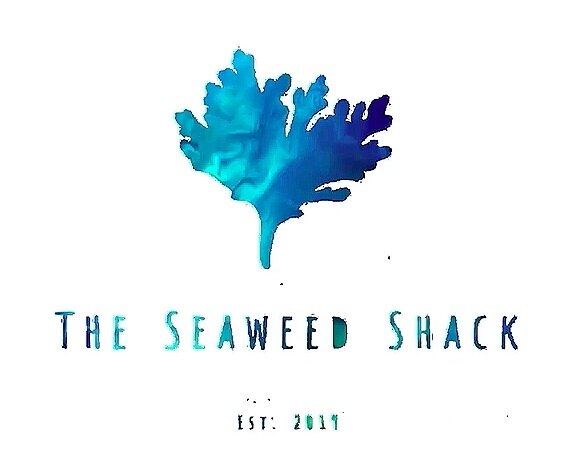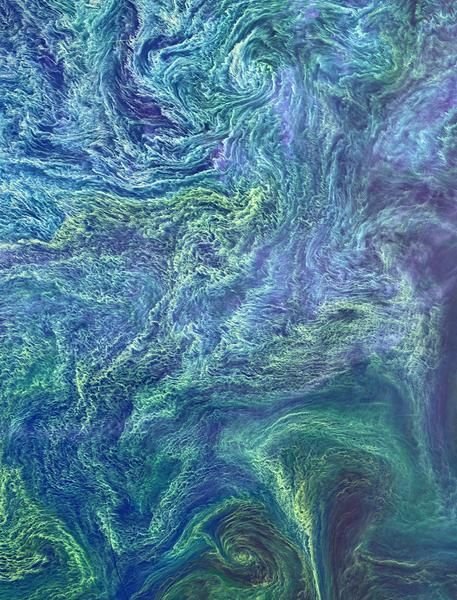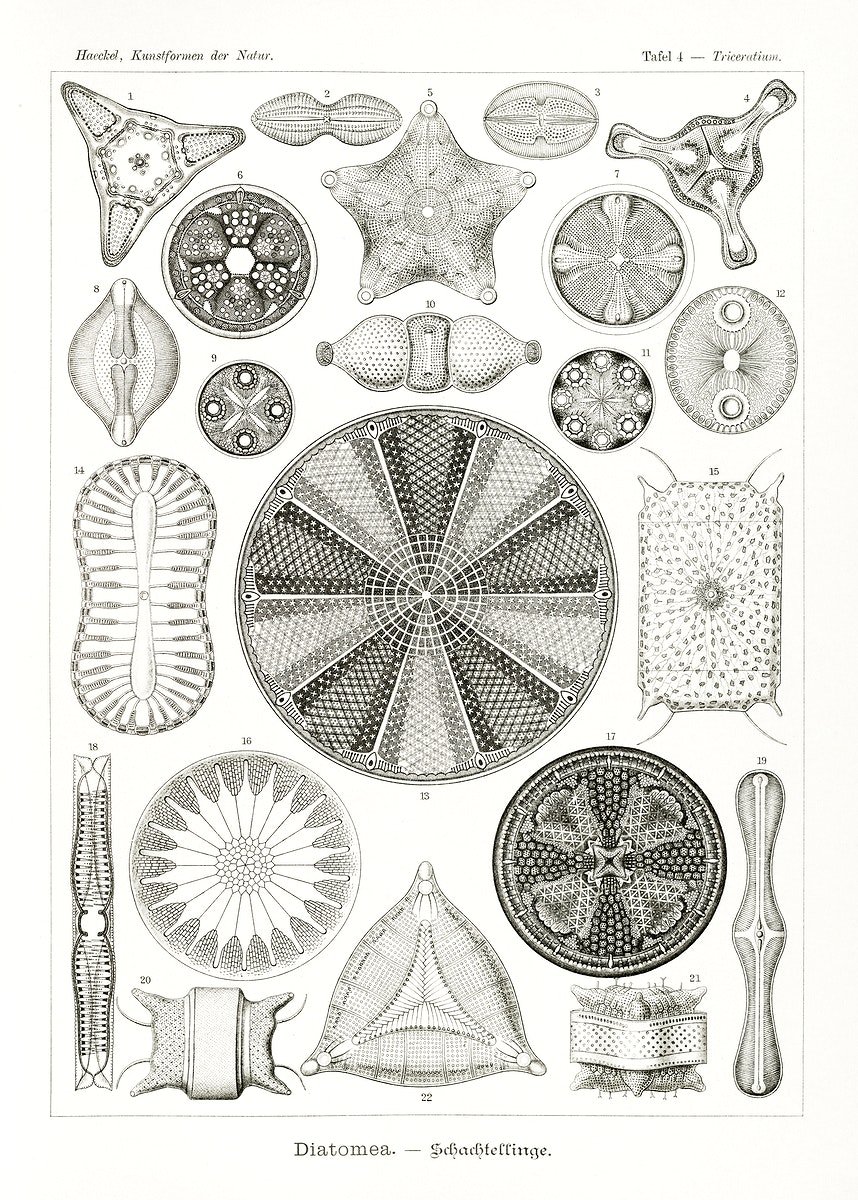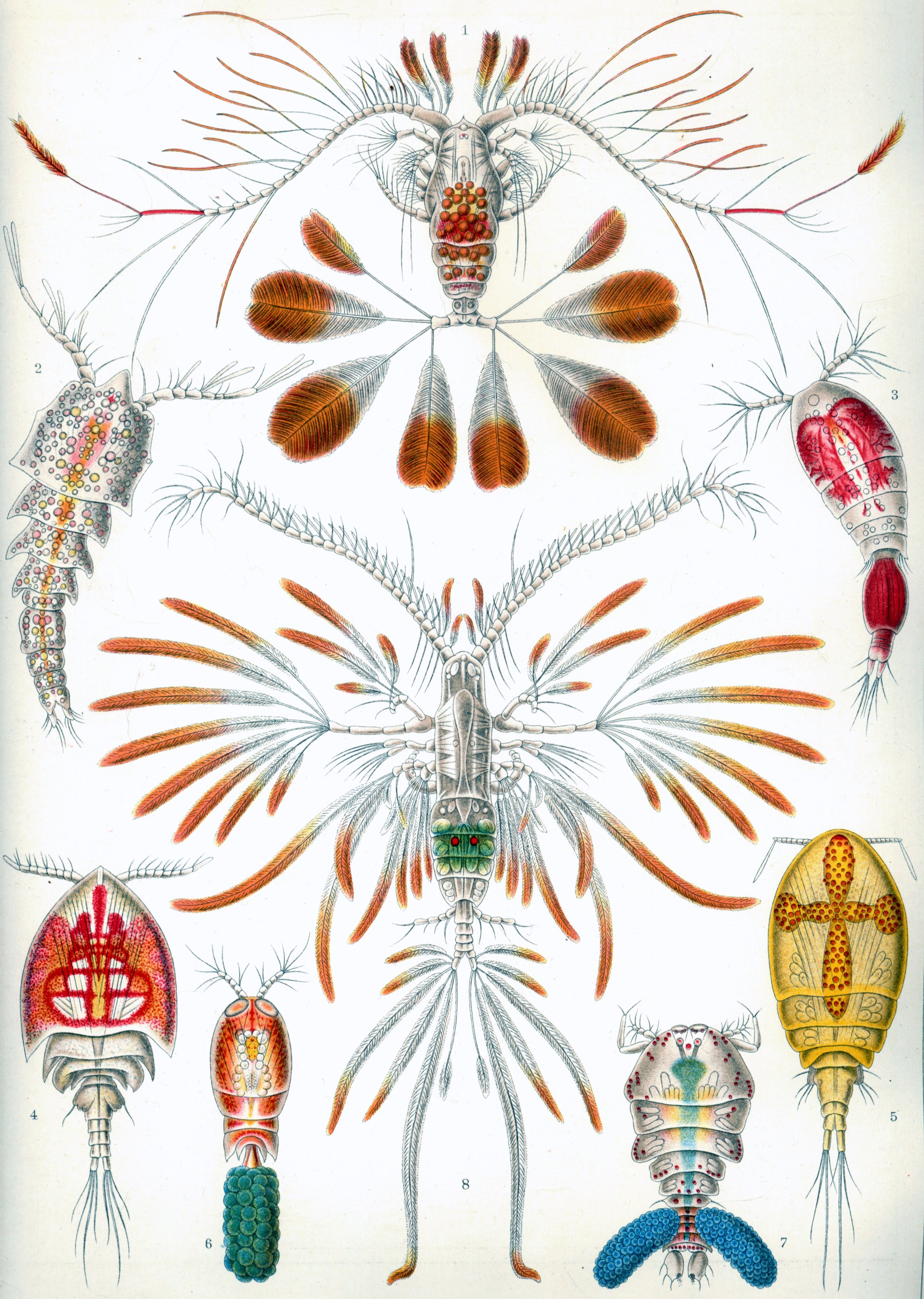Plankton
The word “plankton” comes from the Greek for “drifter” or “wanderer.” They are the basis for all life on Earth. These microscopic creatures encompass both phyto- (i.e. autotrophic and photosynthetic microalgae) and zooplankton (heterotrophic animals). You can think of plankton as the kindergarten of the sea, mostly being larvae of diverse species including fish, invertebrates, crustaceans, bivalves and algae. Some species start small and grow much bigger. Others grow to a few millimetres in size. Together they represent the rich tapestry of life in our seas.
Plankton are the foundation of the ocean ecosystem. Nothing would work without them. They are also highly sensitive to changes in their environment, including temperature, salinity, pH level, and nutrient concentrations. Too many nutrients in the water can cause harmful algal blooms (HABs).
Phytoplankton
The two main classes of phytoplankton are dinoflagellates and diatoms. Dinoflagellates use a whip-like tail, or flagella, to move through the water and their bodies are covered with complex shells. Diatoms also have shells, but they are made of a different substance and their structure is rigid and made of interlocking parts.
Phytoplankton contain chlorophyll and require sunlight in order to live and grow. Most phytoplankton are buoyant and float in the upper part of the ocean, where sunlight penetrates the water. Phytoplankton also require inorganic nutrients such as nitrates, phosphates, and sulfur which they convert into proteins, fats, and carbohydrates.
In a balanced ecosystem, phytoplankton provide food for a wide range of sea creatures including shrimp, snails, and jellyfish. When too many nutrients are available, phytoplankton may grow out of control and form harmful algal blooms (HABs). These blooms can produce extremely toxic compounds that have harmful effects on fish, shellfish, mammals, birds, and even people.
Zooplankton
Zooplankton include microscopic animals (crustaceans, krill, sea snails, worms, etc.) including larvae of fish and molluscs like jellyfish. Most zooplankton eat phytoplankton, which are then eaten by larger animals, including whales. During daylight hours, zooplankton drift in deeper waters to avoid predators. But at night, these microscopic creatures venture up to the surface to feed on phytoplankton. So many animals make this journey that it can be observed from space. Because many zooplankton species eat phytoplankton, shifts in timing or abundance of phytoplankton can quickly affect zooplankton populations, which then affects other species in the food web.
Zooplankton such as copepods are the crucial link between microalgae and larger animals. Plankton are an essential part of any aquaculture operation, being essential for the survival of fish larvae in the first days of life.
So-called “green water” systems grow phyto- and zooplankton in the same tank shortly before feeding them to fish, bivalve or invertebrate larvae. This method “enriches” the zooplankton with proteins, lipids and essential fatty- and amino acids which the larvae need for healthy physiological growth. While live feeds are more expensive and require constant attention, they are much more effective in larval rearing and are therefore an essential part of any aquaculture hatchery.








